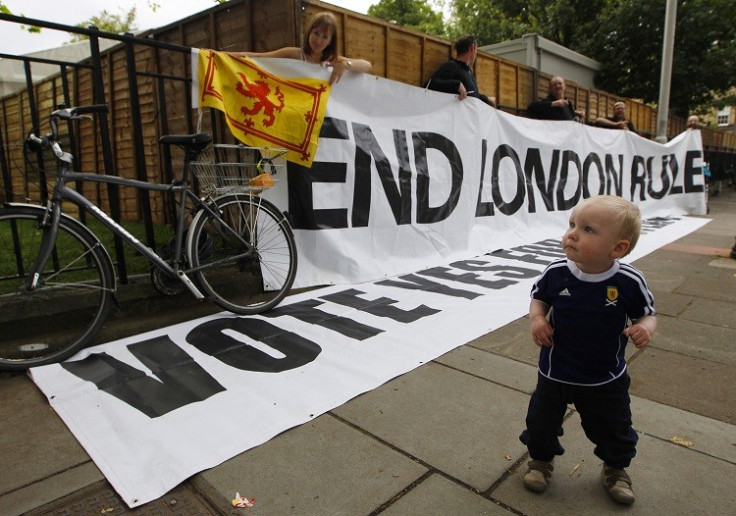Scotland's Currency Conundrum: Independence May Mean Decade of Austerity

An independent Scotland could face a decade of fiscal tightening through tax rises and spending cuts in order to meet European debt-to-GDP rules and maintain sustainable borrowing costs, depending on how much public debt it inherits from the UK's vast pile of over £1tn.
The National Institute of Economic and Social Research (NIESR) estimates that Scotland may need fiscal tightening of 5.4% in the ten years from independence to achieve the Maastricht Treaty agreed debt-to-GDP ratio of 60% under borrowing costs likely to be as much as 1.65% above current interest rates on 10-year UK gilts.
This is because Scotland would need to run an annual 3.1% fiscal surplus in order to lure investors in its sovereign debt at reasonable borrowing costs during the ten years after independence, but the government is currently running a primary fiscal deficit of 2.3%.
It means Scotland would be exposed to sudden downturns or shocks, such as a fall in oil prices hitting revenues from the North Sea, because fiscal levers could not be pulled to flood stimulus into the economy.
As such, it is crucial for Scotland to control its own interest and exchange rates with an independent currency, said the NIESR ahead of the launch of its significant report on the currency conundrum surrounding the 2014 independence referendum.
However, it could get around this problem of inheriting its share of the UK's vast public debt pile by exchanging oil revenues for debt write-downs, the NIESR proposed.
"The greater the amount of public debt an independent Scotland assumes, the greater the importance of retaining some policy flexibility and the stronger the case for introducing a new Scottish currency," said Dr Angus Armstrong, director of macroeconomic research at the NIESR and one of the report's authors.
Prosperity Needs 'Hard' Currency
The report, called Scotland's Currency Options, will launch on 19 September. It analyses three currency scenarios for an independent Scotland. They include remaining as part of the sterling union, adopting the euro, and having an independent currency.
Central to the currency question posed by the NIESR report is fiscal solvency and so the level of debt burden an independent Scotland would end up with.
"Recent events around the world, particularly in Europe, have shown that fiscal sustainability and currency arrangements cannot be considered in isolation," said Dr Armstrong.
"We consider how the existing UK public debt would be divided, and the ability of an independent Scotland to pay its share. For an independent Scotland to prosper it requires a 'hard' currency; one in which investors are willing to hold long-dated Scottish government debt at a reasonable price.
"A necessary condition for a 'hard' currency is that government solvency must always be beyond doubt."
Alex Salmond, leader of the Scottish National Party (SNP) which is campaigning for a yes vote in the independence referendum, has already said he would keep the UK pound as currency is the country left the union.
He said it would be similar to the Isle of Man having its own pound, pegged to UK sterling, which has lower borrowing costs than the British government.
In a speech, Chancellor George Osborne claimed Scottish families would be £2,000 worse off if their nation split from Britain.
© Copyright IBTimes 2025. All rights reserved.






















